
Your value as an SEO comes from your ability to demonstrate your results.
It’s being able to point to the search results and say, “You were on page 50, now you’re ranking #1!”
It's the only way to get your clients to bow down and kiss your feet.
Or to retain bragging rights over your friends who dabble in SEO and show that you actually know what you’re doing.
Sounds easy enough, but here’s where it gets a little murky.
You can’t measure your success based on rankings improvements alone (unless you want to cry yourself to sleep every night).
Luckily, there are a ton of other ways you can tangibly measure your SEO performance.
And that’s what you’re about to learn. So keep on reading, my friend.
Why Measuring SEO Effectiveness Seems Impossible
If you’re new to SEO, you’re probably feeling a little uncertain. You’ve been working for months, your eyes hurt, you’ve been executing every day. But, you don’t really know if what you’re doing is actually working.
We’ve all been there.
So, you track a single metric. Most likely keyword rankings. You see a few keyword rankings improve and you exhale, thank god, and get back to work.
But, here’s the problem: Using a single SEO metric won’t give you the entire picture. It’s like calling a puzzle finished when you’ve only put one piece on the board.
The solution is to track multiple metrics. These metrics will come from your analytics and SEO tools of choice.
It’s time to start proving your worth with cold, hard data.
Mmmm, sounds delicious. Let’s jump in!
1. Keyword Rankings
Everyone’s favorite SEO metric—keyword rankings. I don’t know if it’s an ego thing, but SEOs love bragging about keyword rankings. Now, it's a solid metric and holding down the number one spot does make you feel...
The keywords you rank for will tell you a variety of things:
- Whether or not you’re targeting the right keywords. If your site is nowhere to be found for your target keywords, then you need to change your strategy towards less competitive keywords (at least for the time being).
- Whether or not your site is actually growing. In time, you should see your rankings improve, as well as the total number of keywords your site is ranking for. Growth in these two areas will tell you that your site is gaining authority and that your posts are starting to pick up more longtail traffic.
Whether or not you have good keyword rankings isn’t that important (especially if you’re just starting out).
However, what is important is that you’re seeing either an increase in how many keywords you’re ranking for, or that the ranking positions are improving.
When you start to rank for more keywords, then this means you’re picking up longtail traffic. Nice work!
While if you see one of your keywords move from ranking #20 to ranking #2, then you’re absolutely killing it.
2. Backlink Quantity and Quality
There are over 200 different factors that contribute to your rankings. It’s near impossible to track all of them. But, you don’t have to worry about that, because…
Backlinks are still one of the top ranking factors.
Focus on improving the quality and quantity of your backlinks and Google will show you some serious love.
If you aren’t getting any new backlinks, or those backlinks are low quality, then you’ve got a problem with your strategy and it’s time to course correct.
Tracking your backlinks will give you very important information like:
- How effective your link building strategies are. For example, if you’re doing broken link building and you get 10 links from 100 emails sent, then you’re getting a pretty solid response rate. Keep going!
- Potential sources for future link building. Chances are, not every link pointing towards your site is one that you’ve built yourself. By tracking your links, you’ll be able to identify potential opportunities for future links.
- How cost-effective your strategy is. If you spent $500 to acquire a single link, and that link didn’t budge your rankings, then it’s time to adjust your strategy towards cheaper link acquisition options.
A ton of low-quality links won’t budge your rankings. But, get a few links from high-quality sources and you’ll definitely see an improvement.
3. Organic Traffic
I’m gonna take a wild guess here: You’re probably doing SEO to improve your organic search traffic.
It's what most people start doing SEO for.
By monitoring your organic traffic levels over time, you’ll get a great picture of how effective your SEO strategy actually is. With a growth in organic search rankings having a direct tie to your SEO efforts, it’s one of the most accurate metrics you can get.
To keep track of the change in organic search traffic, we’ll be using everyone’s favorite tool—Google Analytics.
Once you’re on the home dashboard, click on the Reports button on the side panel followed by Acquisition and then the Traffic Acquisition tab.
.png)
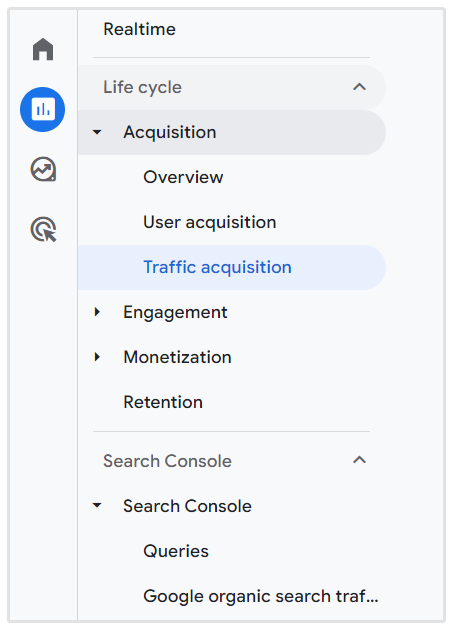
Now you'll see a line graph showing you where your traffic is coming from.
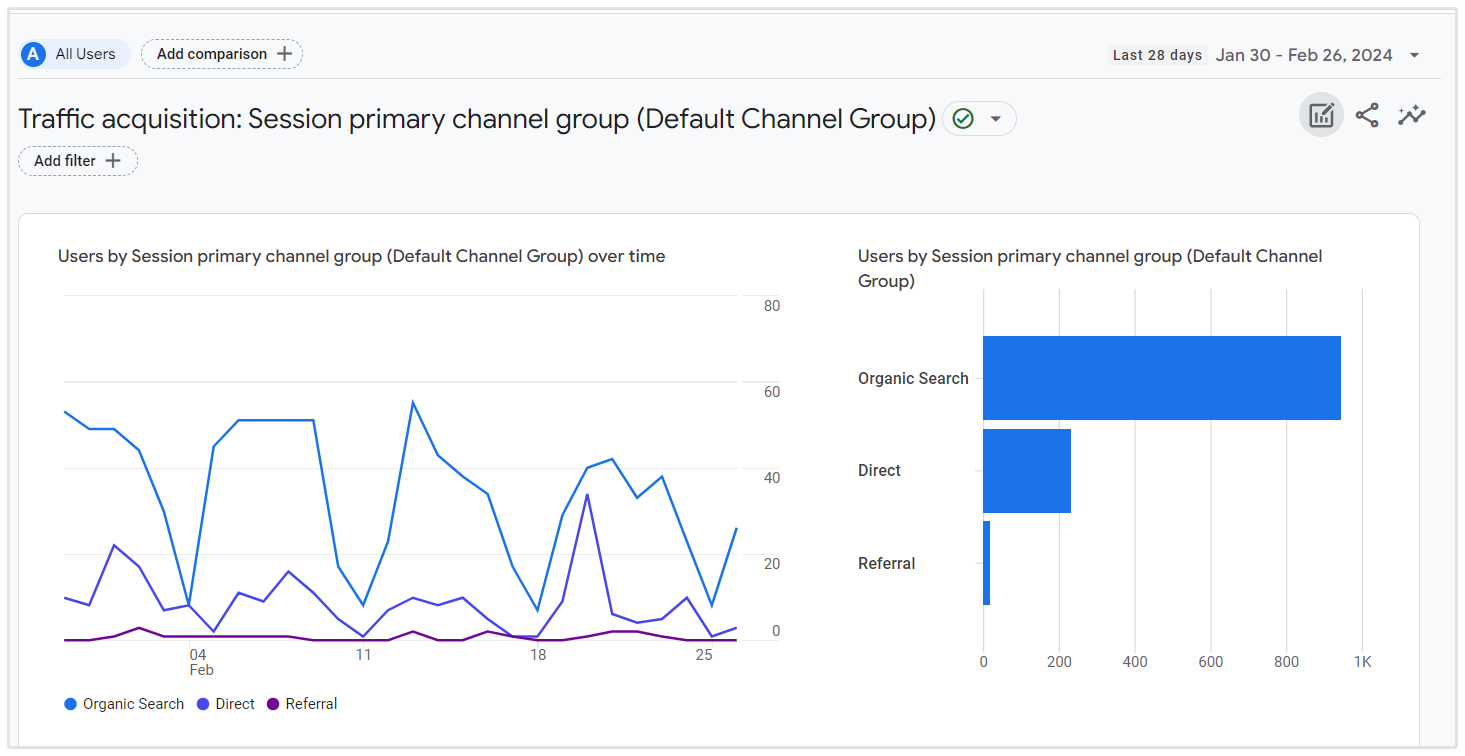
Your exact organic traffic levels aren’t important, except for one thing—they show an upward trend.
If your organic traffic is improving, then your strategy is working. If your organic traffic is flatlining or decreasing, then you need to change your strategy.
4. Time Spent on Page
In a post-Panda world, engagement metrics are only growing in importance. The time your visitors spend on your site is one of these metrics.
It goes like this: If a user spends a lot of time on your site, then they probably like your content. Which means your site is valuable and full of high-quality stuff.
Having a high time spent on page means that you’re satisfying user intent. A searcher has a specific intention when they type a keyword into Google, then if they land on your page, and spend a lot of time there, then your site satisfies this intent.
To discover the overall time your visitors spend on your site, you’ll want to dig into Google Analytics once again.
On the left-hand side of your dashboard, click on Reports>Enagement>Overview
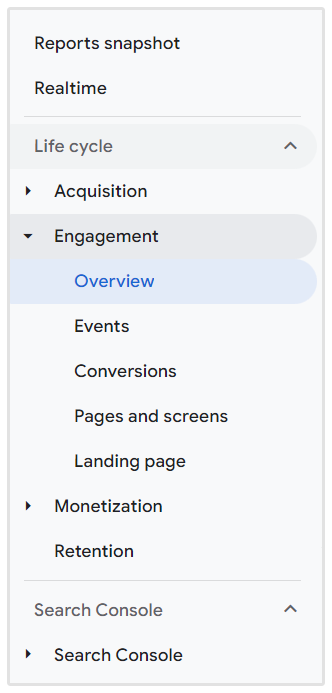
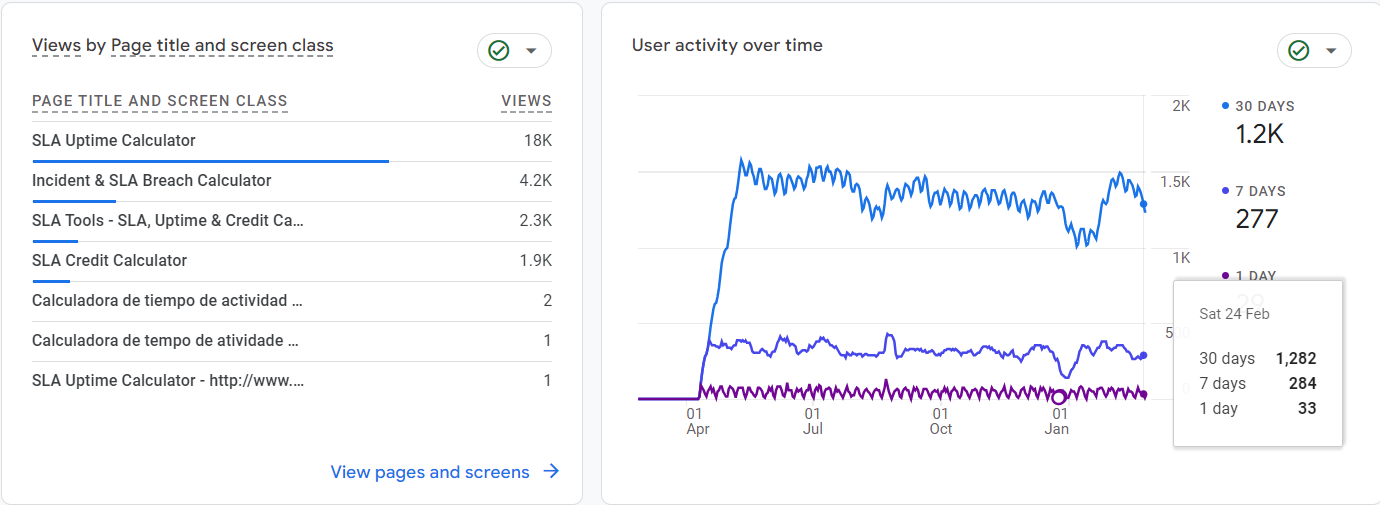
This will bring up every page and post on your site, so you can see the average engagement time for each page.
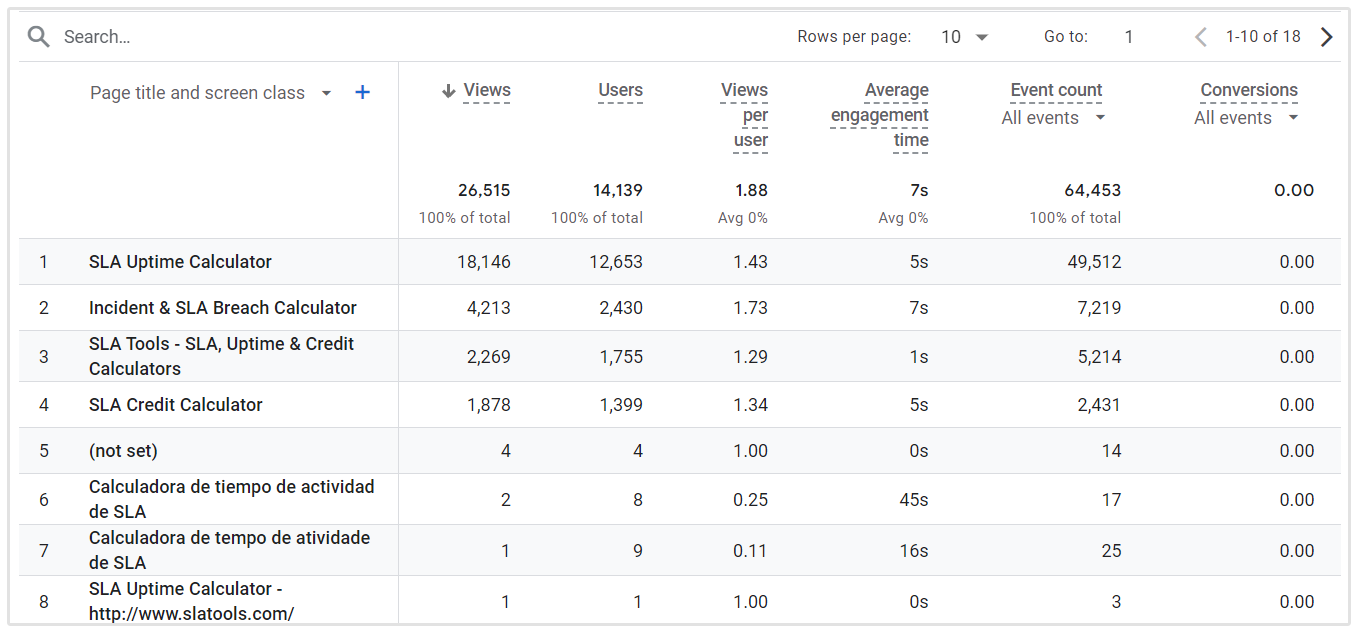
Here you’ll be able to see which pages actually keep your visitor's attention and what pages are repelling your visitors like the plague.
For example, a time spent on page of five minutes would be great for a blog post, but poor for a social media network.
Likewise, a time spent on page of 30 seconds would be great for a high-converting landing page, but awful for a long, in-depth blog post.
When measuring your own average time spent on page, think about the goal of the page. Is it purely informational? Or, is the goal to drive email signups? The purpose of the page will influence the amount of time users spend on it.
As a good benchmark for in-depth written content, consider how long it takes you to read through the entire page. An average time spent on page that hovers around that same number would mean users are actually reading and enjoying your content.
5. Engagement Rate and Bounce Rate
Google Analytics 4 has introduced a new metric called Engagement Rate.
This metric is essentially the opposite of the bounce rate and tells you how long your visitors have engaged with your page.
Having a high bounce rate means that users land on your site and immediately hit the back button.
Whereras a high Engagement Rate means your vistors are lingering on your page much longer and engaging with the site.
Google’s goal is to make their users happy.
So, if people continually land on your site and leave as fast as humanly possible, this isn’t going to have a positive effect on your rankings. To say the least.
Bounce rate and Engagement rate are two metrics that you’ll want to evaluate on a page by page basis.
This will tell you if you have any weak pieces of content or pages that are destroying your overall bounce rate and engagment rate. If you'd like to learn how to set up these two metrics in your GA4, you can read more here.
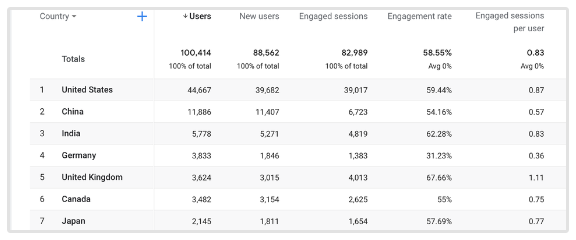
Keep in mind that your bounce rate will be dependent on your niche, the kind of content that’s present on your page, and the source of traffic.
For example, if your post answers the question, “How many calories are in a banana?,” then your user will probably just read the answer and leave your site.
To determine whether or not your bounce rate sucks, let’s see how you stack up against others in your niche. CustomMediaLabs has found the average bounce rates for the following industries:
- 20% – 45% for e-commerce and retail-based websites
- 25% – 55% for B2B websites
- 30% – 55% for lead-gen websites
- 35% – 60% for non-ecommerce content sites
- 60% – 90% for landing pages
- 65% – 90% for online portals, blogs and information sites that revolve around news and events
6. Mobile Traffic
More people use their mobile devices to search than desktop.
Crazy.
To Google, mobile is king.
A rise in mobile traffic means that you’re doing things right in the eyes of Google. It means that your site is responsive, loads quickly and has high engagement metrics. Without these in place, you simply wouldn’t rank in mobile search.
This is doubly true if you’ve done a recent redesign or content overhaul to adhere to mobile standards.
Plus, a rise in mobile traffic will tell you that you’re ranking for certain mobile-specific keywords. Mobile rankings differ from desktop rankings, and you could also be picking up traffic from voice-only mobile searches.
To check out your mobile traffic stats, we’re heading back to Google Analytics (damn this is a useful tool).
From your dashboard, navigate to Acquisition > Traffic Acquisition > This will bring up a screen that will show you where your traffic is coming from.

Once this report has loaded, you'll want to click on the graph and penicil icon under the date range.

This option allows you to create a comparison chart that can show various metrics include Mobile traffic.
To set this up, you'll need to click on " Add New Comparison".
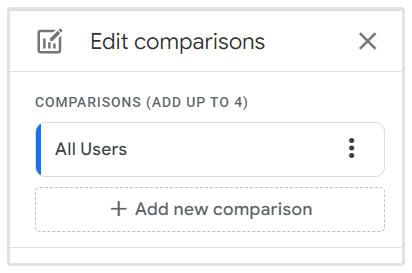
Thereafter, you'll need to set up your comparison to show the specific metric you want to compare with.
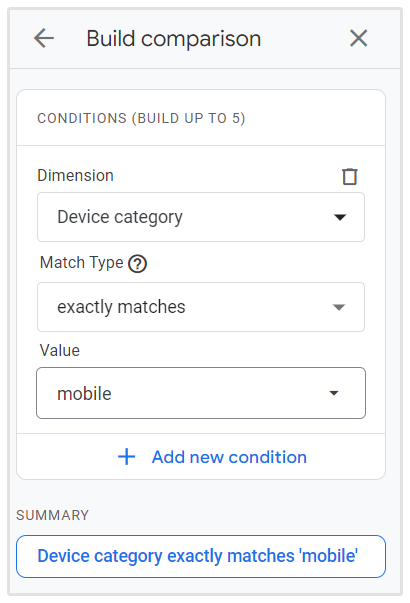
For Mobile traffic, you'll want to select Device Category as the Dimension, with Exact Matches as the Match Type followed by Mobile as the Value.
This will then create a report that shows you how much of your traffic comes from Mobile users.
.png)
Exactly how much traffic you can expect from mobile will depend upon your niche, however, if you’re in any of the following niches, then you should expect over 60% of your traffic to come from mobile users.
- Beauty and Fitness
- People and Society
- Pets and Animals
- Home and Garden
- Health
7. Click-Through Rate (CTR)
Measuring your CTR will show you how good your listings are at generating clicks to your site.
Sure, ranking high in Google is important, but what’s the point if your high ranking isn’t generating any traffic?
There’s an ongoing debate about whether or not your CTR is a ranking factor, but that’s not important. What is important is that the higher your CTR, the more traffic your site will receive.
To figure out your CTR, you have two options, Google Search Console and Google Analytics. Let's start with Google Search Console.
First, fire up Google Search Console.
On the left-hand side, click on Search Traffic > Search Analytics.
At the top of the report, you’ll see checkboxes titled Clicks, CTR and Impressions. Clicking the CTR box will give you a report of the average click-through rate of your site and your top performing pages and keywords.
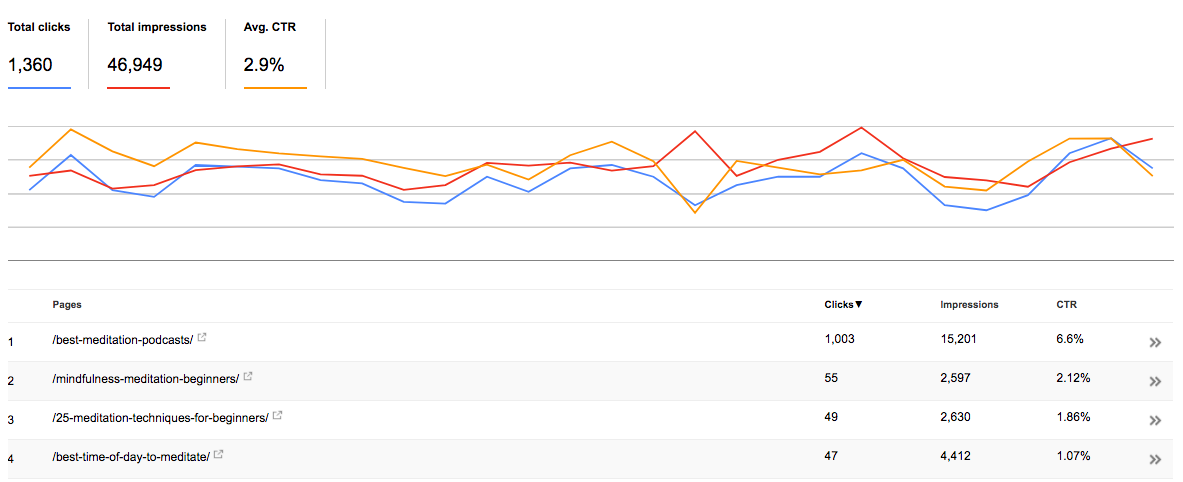
You can also view your CTR on a page, country and even device basis, based on the sorting options above.
Now onto Google Analytics.
First, click on the Reports tab on the left side panel.
.png)
Then you want to scroll down, click on Google Search Console and then Google Organic Search Traffic. Note, you'll need to have your GSC account linked with your GA4 account for this to work.
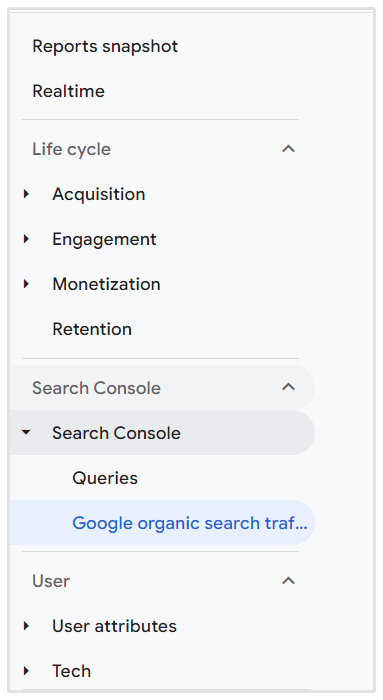
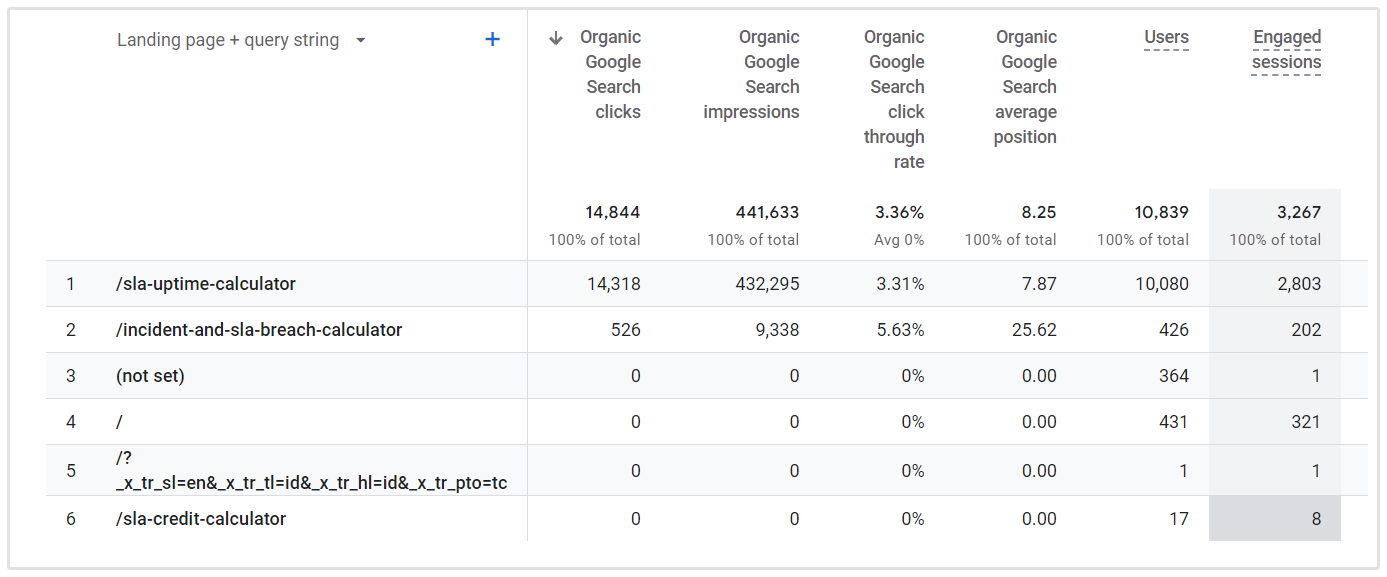
The column you want to focus on is the Oragnic Google search click through rate.This is essentailly the same info you'd get from GSC except you can access it via GA4.
Why is CTR importatn though?
A recent study from SmartInsights found the following average click-through rates per Google position. Check out the ranking data below to determine if your CTR is high or low for your current ranking position:
- #1 – 39.8%
- #2 – 18.7%
- #3 – 10.2%
- #4 – 7.2%
- #5 – 5.1%
- #6 – 4.4%
- #7 – 3%
- #8 – 2.1%
- #9 – 1.9%
- #10 – 1.6%
8. Domain Authority
Domain Authority (DA) is a term and metric coined by Moz that tells you how authoritative your domain is. The more authority your domain has, the easier it’ll be to rank, and the more trustworthy you are in the eyes of Google.
Seeing your DA improve is a strong indicator that your SEO efforts are paying off.
Luckily, tracking your DA is very simple. Just open SEOptimer again, and on the dashboard you’ll see your website’s DA right there in the top menu.
Whether or not you have a good DA depends upon your industry. Here are some benchmark figures from Smart Insights so you can see how your site stacks up:
- Media and Publishing: 86.23
- Higher Education: 78.67
- Sports and Entertainment: 75.55
- Accommodation and Food Services: 71.27
- Software and Applications: 67.52
- Healthcare: 67.51
- Business Services: 67.04
- Retail: 64.62
- Consumer Goods: 64.07
- Construction Products: 63.18
- Real Estate: 61.52
- Finance and Insurance: 60.09
- Wellness: 58.35
9. Returning Visitors and Direct Visitors
It’ll be way more difficult to improve your rankings if people don’t like your site.
But, beyond getting information from the two metrics above (bounce rate and time on site), don’t you wish there was something else you could track?
Having a high proportion of returning visitors means that people can’t get enough of you. Same goes for direct visits.
If your content sucks, then visitors aren’t going to come back to your site. Think of these two metrics as value indicators.
These metrics aren’t essential, but having a solid number of returning visitors and direct visitors suggests to Google that you have a memorable site, and you give off the kind of quality indicators that will help you rank.
You can find these numbers within Google Analytics. On your dashboard, navigate to Reports > Retention
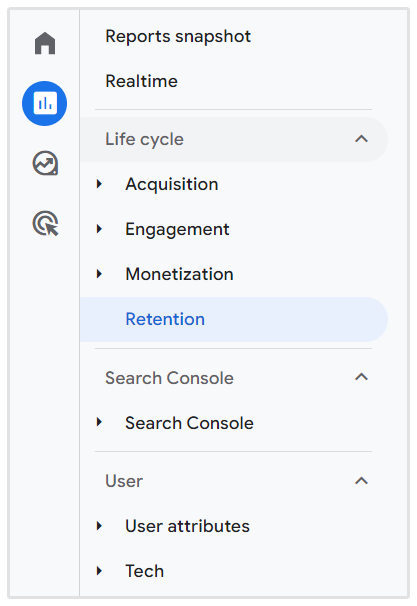
Here you’ll see a graph that shows the number of new and returning visitors.
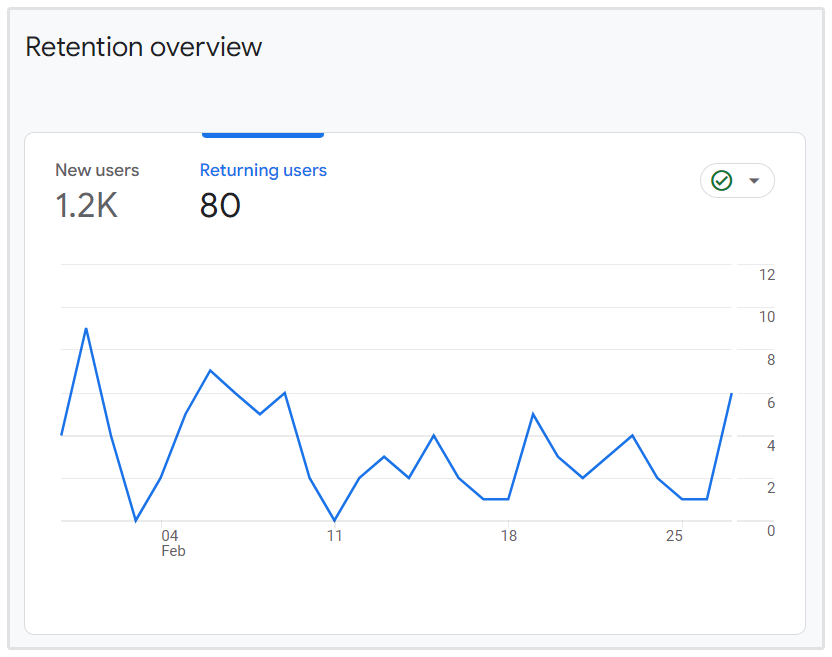
To see how many direct site visits you get, navigate to Reports > Acquision> Traffic Acquisition. Here you’ll be able to see how your direct traffic stacks up against other traffic types.
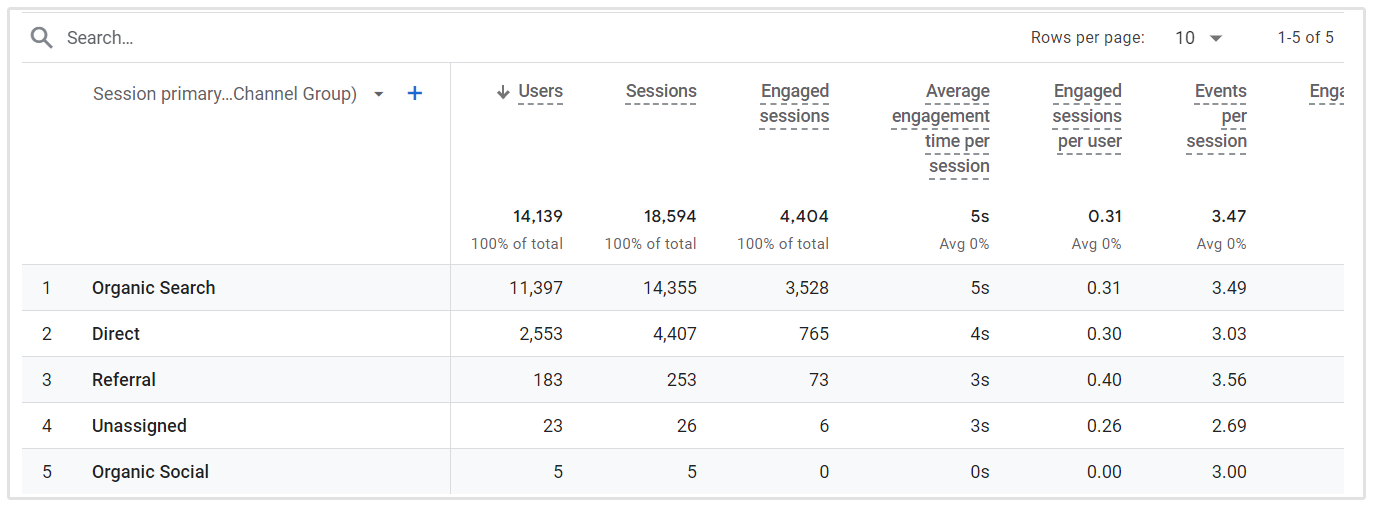
For example, an e-commerce site will have a much higher proportion of returning visitors than an informational site that gets most of its traffic from the search engines.
However, if your proportion of returning visitors is less than 25%, then you probably have an issue with your content.
People come across your site and rarely return. Anything over 30% means that you’re retaining a third of people who come across your site, which is a solid number.
Time to Track Those Results
Now you're equipped with the right tools and know-how to truly show off the results you're getting for all of your SEO work.
If all of the above metrics seem like overkill, then just pick a couple to start with and add more in time.
By regularly checking your SEO results, you'll be able to refine your strategy with tangible data, instead of wasting time with SEO tasks that aren't actually propelling your rankings forward.










